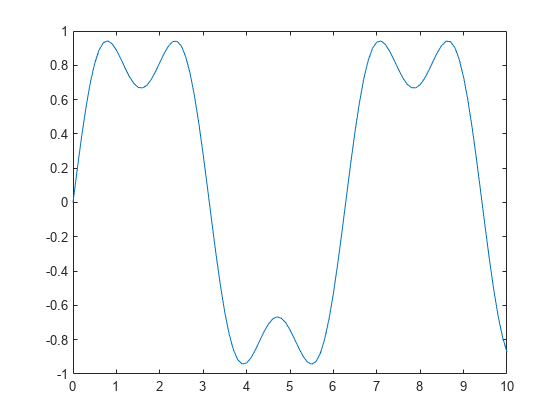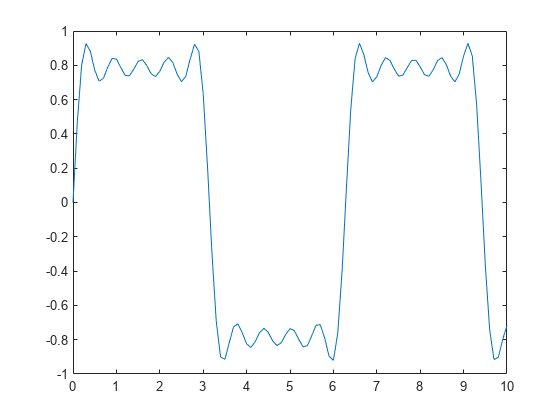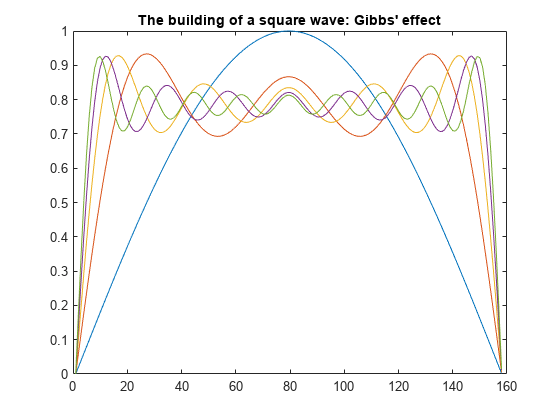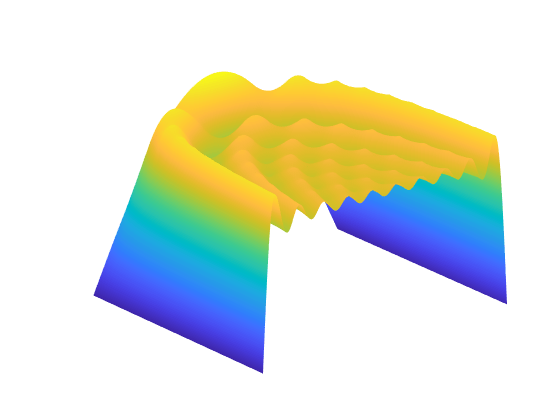从正弦波转换为方波
此示例说明方波的傅里叶级数展开式是如何由奇次谐波的和构成的。
首先以 0.1 为步长,生成一个从 0 到 10 的时间向量,并求出所有点的正弦。绘制基频图。
t = 0:.1:10; y = sin(t); plot(t,y);

接下来,向基频添加第三个谐波,并绘制谐波图。
y = sin(t) + sin(3*t)/3; plot(t,y);

接下来使用第一、第三、第五、第七和第九个谐波。
y = sin(t) + sin(3*t)/3 + sin(5*t)/5 + sin(7*t)/7 + sin(9*t)/9; plot(t,y);

最后,从基频开始创建更多连续谐波的向量,一直到第 19 个谐波为止,并将所有中间步长保存为矩阵的行。
在同一个图窗中绘制这些向量,以便显示方波的演变。请注意,吉布斯效应表明它实际上永远不会转换为方波。
t = 0:.02:3.14; y = zeros(10,length(t)); x = zeros(size(t)); for k = 1:2:19 x = x + sin(k*t)/k; y((k+1)/2,:) = x; end plot(y(1:2:9,:)') title('The building of a square wave: Gibbs'' effect')

下面提供了一个三维曲面图,该曲面图表示正弦波到方波的逐变过程。
surf(y); shading interp axis off ij
